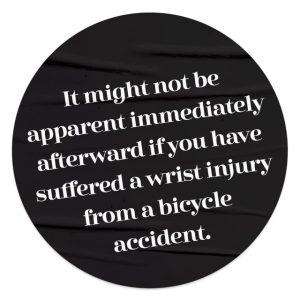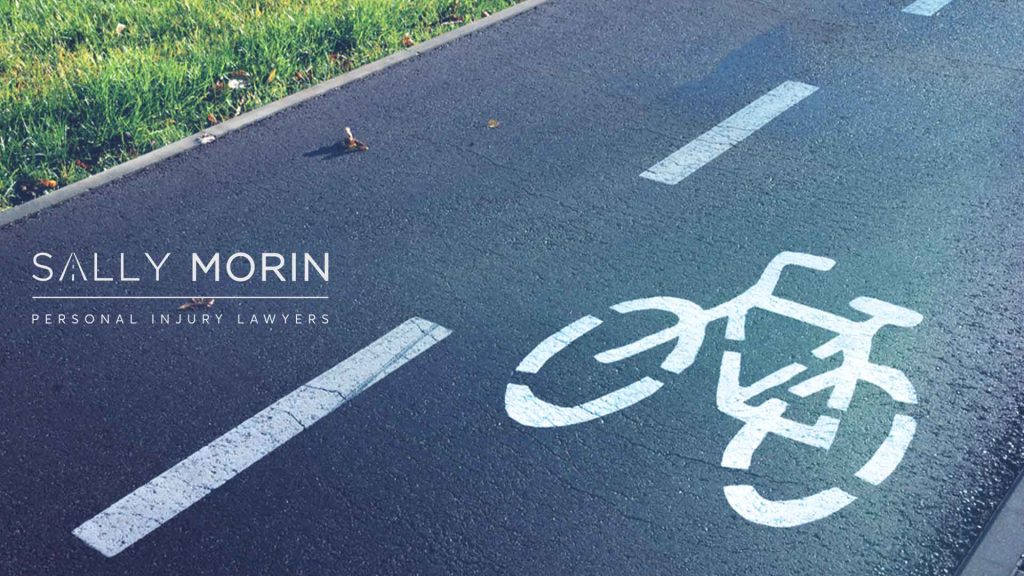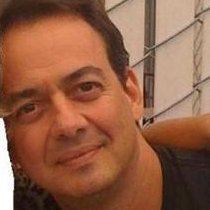Wrist Injury from Cycling Accident
The heavy traffic and pleasant weather in California make the area a perfect place for bicyclists. Many ride for pleasure, exercise, and even as an economical and eco-friendly mode of transportation. Cyclists are, unfortunately, prone to injury when involved in an accident due to there being little to no protection from impact when falling. And due to our natural reflexes, the hands and wrists are especially susceptible to injury because we want to catch ourselves when falling and instinctively put our hands out to brace for impact.
In this blog, we’ll explore the different types of bicycle wrist injuries, their causes, symptoms, and the potential long-term impact they can have on your life. Additionally, we’ll discuss the importance of seeking proper medical attention and understanding your legal rights if you have sustained a wrist injury due to someone else’s negligence.
Common Wrist Injuries After a Cycling Accident
Wrist injuries sustained in bicycle accidents can range from minor sprains and strains to more severe fractures and ligament damage. These injuries can significantly impact your daily activities, hinder your ability to work, and even affect your overall quality of life. It is crucial to have a thorough understanding of wrist injuries, their potential complications, and the necessary steps to take for recovery and compensation.
If you’re suffering from bicycle wrist pain after a cycling accident, you might have a bike accident hand injury that needs medical attention. Hand, wrist, and forearm fractures are prevalent injuries that bicyclists sustain when they are involved in accidents.

Some bike accident hand injuries include the following:
Wrist Fracture
One of the most common fractures is the distal radius, the large forearm bone that articulates with the smaller carpal bones in the wrist. The break will often lead to pain in the forearm, approximately one inch away from the wrist.
Scaphoid Fracture
The scaphoid is a small bone in the wrist at the base of the thumb. When a bike rider falls on an outstretched hand, the scaphoid is compressed and could lead to a palm fracture. Diagnosis of this injury is usually made by X-ray; however, it usually takes a week before an X-ray will detect the fracture.
Wrist and Finger Sprains and Breaks
A sprain occurs when a ligament holding one bone to another bone at a joint is partially or completely torn. With a fall from a bike, the ligaments most likely to be torn are on the palm side of the wrist and where the fingers meet the hand. Again, this typically happens as one braces himself from the fall. Common breaks in the hand and fingers include:
- Phalanx fracture – A phalanx is any bone of the fingers or toes. A phalanx fracture is a crack or complete break in one of these bones.
- Metacarpal fracture – Your metacarpals are the bones in your hand that connect your thumb and finger bones (your phalanges) to your wrist.
Symptoms of a Hand or Wrist Injury

It might not be apparent immediately afterward if you have suffered a wrist injury from a bicycle accident. Here are some things to look for within a day or two:
- Swelling
- Bruising
- Pain with movement
- Radiating pain from the wrist to the fingers
Difference Between a Broken Wrist and a Sprained Wrist
The difference between a break and a sprain is related to your anatomy. If you have a sprain, it means you have damaged one or more ligaments, which are the tough bands of fibrous tissue that connect your bones.
If you have a broken wrist, it means that one or more bones in your wrist have fractured or shattered. Your wrist joint comprises eight small bones around your wrist (the carpal bones) and the end of your forearm bones (the radius and ulna).
You will likely feel extreme pain if your wrist is broken. Sprains can cause some tenderness and pain, or you might not feel much discomfort at all.
Hand or Wrist Movement
The other way to tell is by how much you can move your hand. With a sprain, you should be able to move your wrist in a normal range of motion (but it will be painful). If you have a wrist or palm fracture, your mobility will be limited.
Sound When Moving the Wrist
When you got into your accident, you may have noticed the sound your wrist made, and it could determine if it’s fractured or sprained. It is most likely a fracture if you heard grinding, crunching, or cracking. With a sprain, there is often no sound, but sometimes there could be a popping sound.
Still, it can be hard to tell the difference since both come with bruising, swelling, and hand weakness. So, if you suspect your bicycle wrist pain is from a fracture or sprain, you should immediately consult your doctor. After seeking medical attention, your next step should be to contact an experienced bicycle accident lawyer. If your bicycle accident was caused my someone else’s negligence, you deserve compensation to cover your damages.
Contact Your Trusted Bicycle Accident Lawyers in San Francisco
If you have suffered a wrist injury from a cycling accident, look no further for legal help than the expert team at Sally Morin Personal Injury Lawyers. We can help you take the next steps to get proper care and compensation for your injury. Call our offices 24/7 at 877-380-8852 or visit our website to schedule your free consultation.











